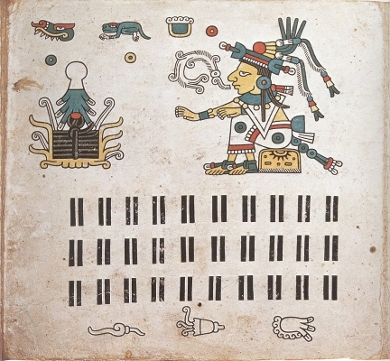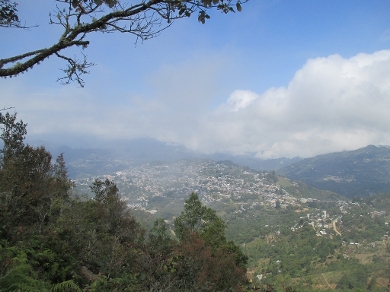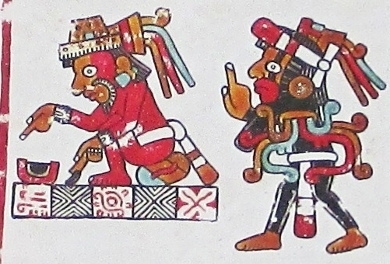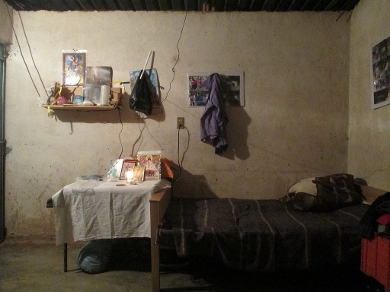Research project
Shamanic Knowledge
Mazatec chants and ancient Mesoamerican pictography
- Funding
-
 European Research Council (Advanced Grant 295434).
European Research Council (Advanced Grant 295434).
- Partners
The fieldwork in the Mazatec town of Huautla is carried out together with Santiago Cortés Martínez, president of the cultural association “Ndi’xitjo- Pequeños que brotan” (The little blossoming ones).
Short Abstract
My research considers the relationship between two sources of Mesoamerican shamanic worldview and ritual practice: the ancient pictorial documents and the present-day Mazatec curing chants.
Part of a larger body of oral literature, chanting in contemporary Mazatec communities of Oaxaca, Mexico, is performed during public ceremonies (such as Huehuentones, Day of the Dead) and curing rituals, carried out at night in the privacy of the curandero’s house. In this case, its aim is to guide, retrieve and ultimately cure the soul of the suffering person. The chant is instrumental in this process, verbally creating an imaginary path of healing and self-knowledge. The chant’s structure is repetitive, redundant and accumulative. Assonances rather than rhymes lead to unexpected associations and open to constantly new interpretative solutions.
A specific genre within the ancient art of Mesoamerican pictography, religious manuscripts helped and guided the diviners in dealing with sickness, social conflicts, and agricultural fertility. The images on the stuccoed deerskin do not tell a story, rather they offer clues to envisioning always new solutions to the problem at hand. Their prescriptive quality is of combinatory nature: ambiguity and doubt constitute the nodes for complex figural arrangements. Contents and iconography are essentially informed by the relational disposition of the elements on the painted surface.

Research question
What is the relationship between the form (pragmatics, enunciation, and context) of contemporary chants and the ancient art of picture writing? What is the interplay between orality and literacy in the Mesoamerican shamanic tradition?
Project description
The Project has thus far achieved the collection of a corpus of curing and ritual chants that compares with the already published texts by María Sabina, a Mazatec wise woman who died in 1985, whose ceremonies were recorded by outsiders in the 1950s. This constitutes therefore a considerable addition to this rather neglected literary form, for which the Mazatecs are nevertheless renown.
This is a rich new body of sources, not only for the content information they provide, but also for the wealth of details regarding the context and circumstances of the performance itself.

Working in Huautla (the Mazatec “capital”) together with Santiago Cortés Martínez has helped to disseminate our work among Mazatec people, fostering awareness of the richness of their cultural and literary traditions, especially among younger generations who often leave town to pursue career and studies outside of their communities of origin. It is important that they develop a consciousness to continue this living tradition inherited from their grandparents.
The Faculty of Archaeology has developed an international reputation in the study of ancient Mesoamerican pictography, especially in relation to modern indigenous practices and heritage. Prof. dr. Maarten Jansen and Mixtec researcher Aurora Pérez Jiménez have created a school of study in ancient and modern indigenous traditions of Mexico that spans now over three decades.

In Huautla, I participated in several ceremonies, recording entire sessions that last 3 to 5 hours. We have made follow-up interviews with the curanderos who clarified some difficult passages in the chants. No literary or linguistic approach has ever been applied to this fascinating art form. Santiago Cortés Martínez and I are therefore developing a system of phonetic transcription and systematic translation into Spanish.
While each curandero/a has his/her own way of curing and chanting, some expressions and modalities tend to repeat. The language employed lies out of ordinary speech-codes, phonetically, semantically, and syntactically. At times, this leads to the creation of a wholly new language, neither Spanish nor Mazatec; at times, it fades into whistling, which is also a form of every-day speech in Mazatec communities.
I plan to edit the recordings, which I will eventually publish together with a transcription, translation and commentary. We are working to set up a radio station that will transmit songs and interviews wholly in Mazatec.

